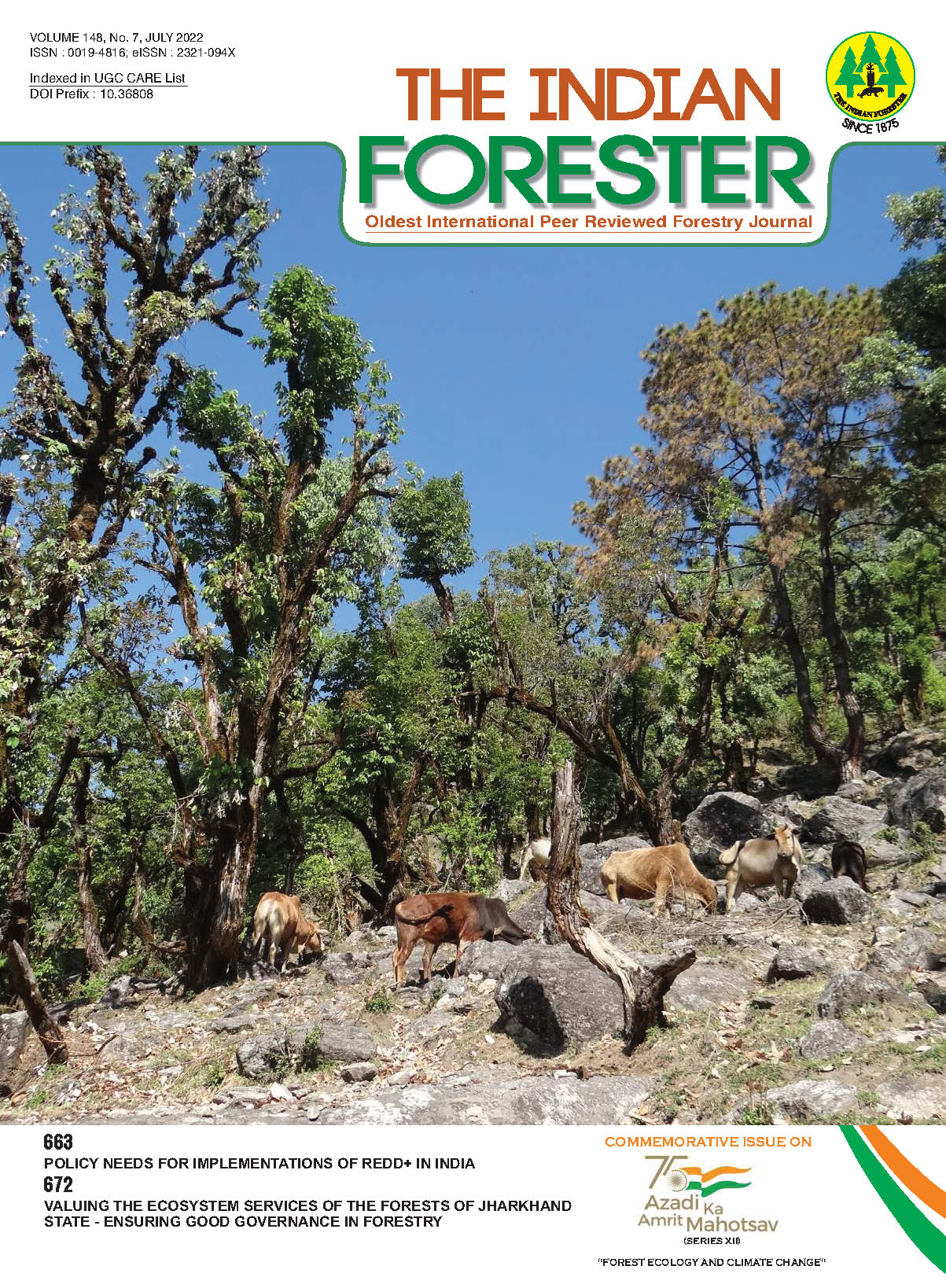The Dynamics of Tropical Forests of Western Ghats, Kerala, India, with Special Reference to Growth, Structure, Species Distribution and Fragmentation
DOI:
https://doi.org/10.36808/if/2022/v148i7/157313Keywords:
Forest dynamics, Growth parameters, Stratification, Forest managementAbstract
The tropical forest is always changing gradually through interaction of the living ecosystem and the environment; though seems to be static at a given period of time. These changes can be accelerated by anthropogenic effects and the resultant formations are normally unpredictable, but definitely towards the degraded succession stages. The stratification concept in forest is based on difference in tree heights. This difference in heights may be due to site qualities, geographical features, but more prominent due to intrinsic nature of species. The distribution of trees by diameter classes is basic to study tropical forests and is the most accessible and studied information. It is rarely analyzed in detail; in particular, the influence of soils, topography, and altitude has not been studied systematically. It makes possible the assessment of the effects of the main environmental factors on forest architecture. The management and modification of tropical rainforest environments, though aimed at controlling dynamic process within a human life span, must take account of the damage of long term regression or face ultimate catastrophe. The forest dynamics in tropical forest ecosystems are highlighted in the paper.
Â
One liner: The forest dynamics with respect to growth, stratification and floristics of tropical forests are highlighted.
References
Ashton P.S. (1988). Dipterocarp biology as a window to the understandings of Tropical forest structure. Annu. Ret. Ecol., 19: 347-370.
Brunig E.F. (1970). Stand structure physiognomy and environmental factors in some low land forests in Sarawak. Tropical Ecology vol. 2(1): 26-43.
Champion H.G. and Seth S.K. (1968) (a). A revised survey of the forest types of India. Govt. of India Press, Nasik.
Champion H.G. and Seth S.K. (1968) (b). A revised study of the forest types of India. Manager of Publications, Government of India, Delhi. 404 p.
Muller-Dombios D. and Ellenberg H. (1978). Aims and Methods of Vegetation Ecology. John Wiley and Sons, New York Odum E.P. (1971). Fundamentals of Ecology. W.B. Saunders .Co., Philatelphia, 574 pp.
Richards P.W. (1952). Tropical Rainforest: an Ecological study. Cambridge Univ. Press. 1952. 450p.
Pascal J.P. (1988). Wet evergreen forests of the Western Ghats of India. Inst. fr. de Pondichery. 337p.
Rollet B. (1974). L'architecture des forets denses humides sempervirentes de plaine. Nogent-sur-Marne, Centre technique forestier tropical (CTFT) p. 298, 8 pl. 155 tabl.
Schulz J.P. (1960). Ecological studies in Rainforest in Northern Surinam Verhand. Kon. Ned. Accad. Wetensch. Afd. Natuurk. Ser., 2(53): 267.
UNESCO (1978). Tropical forest ecosystems: A state of knowledge report UNESCO, /UNEP/FAO. Paris, 1978. p. 683.
Van Steenis C.G.G.J. (1958a). Rejuvenation as a factor for judging the status of vegetation types: the biological nomad theory. In. Proc. Kandy Symp. P212-218. Paris. Unescop 256.
Van Steenis C.G.G.J. (1958b). Commentary on the vegetation map of Maleysia (1/50,000) UNESCO. Humid Tropic Research Projects.
Wyatt-Smith J. (1963). Manual of Malayan silviculture for inland forests. History (part1); Environmental factors (part 2), Silviculture and forest management (part 3). Malayan For. Rec., 23: 400p.
Downloads
Downloads
Published
How to Cite
Issue
Section
License
Unless otherwise stated, copyright or similar rights in all materials presented on the site, including graphical images, are owned by Indian Forester.





